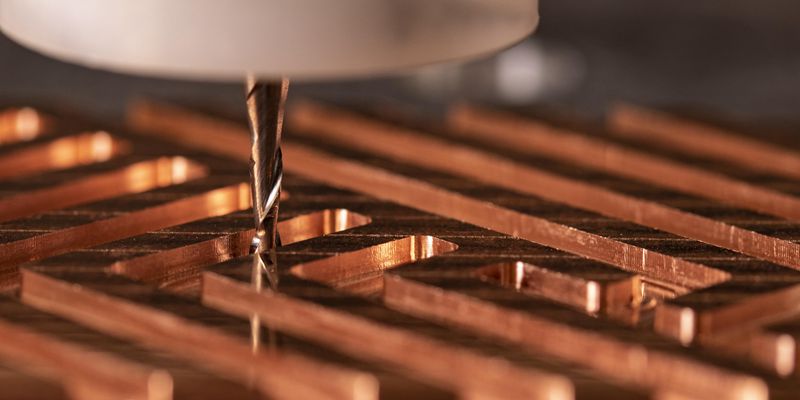- July 29, 2022
Copper remains one of the oldest metal materials. That’s not at all surprising considering the exceptional properties of copper materials. More specifically, copper has excellent corrosion resistance and thermal and electrical conductivity. Thus, making them valuable for several applications.
CNC copper machining is one of the most precise metal machining services employed in various industries for fabricating copper parts. Yet, there are several considerations associated with copper parts machining.
This guide examines all you need to know about CNC copper machining, its applications, and the various factors to consider before machining copper.
CNC Makes Copper Machining Easier
Computer Numerical Controlled (CNC) machines are among the most sought-after manufacturing technologies employed for machining applications. This is due to their high speed, accuracy, precision, and compatibility with various materials.
Above all, this machining service has become very common in manufacturing various materials into desired parts, and copper is no exception. Previously, machining copper was tedious due to its high flexibility, toughness, and plasticity.
Still, CNC machining has made copper parts machining much more manageable. This is all thanks to the automated processes involved in machining desired copper parts.
Grades of Copper Materials for CNC Machining
Copper materials are one of the major groups of commercial metals. To a large extent, you’ll find that different grades of copper materials are available for copper part machining. Also, they comprise varying properties suitable for specific machining projects.
Hence, choosing the right material for your machining project can get tricky as it involves several factors.
Even so, identifying the material with properties suitable for your copper parts is the first step to employing machining.
Take a look at the different grades of copper materials for CNC machining below:
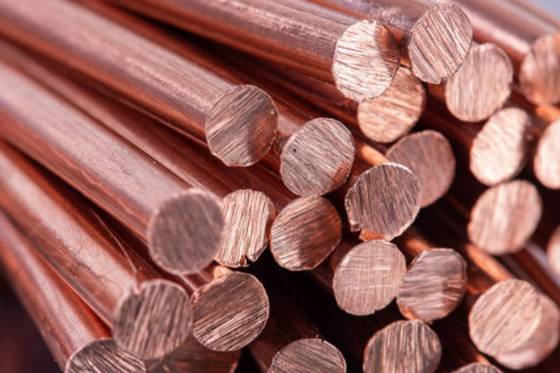
1. Pure Copper
Pure copper materials are usually soft and malleable. The dilute grade of pure copper contains a small amount of various alloying elements. Hence, this helps alter one or more fundamental properties of pure copper to desired forms. Likewise, adding other alloying elements to this copper grade increases their toughness.
Commercial pure copper grades contain about 0.7% total impurities in their composition. You’ll discover that they are designated by UNS numbers C10100 to C13000 based on the added elements and impurity level.
Pure copper is most suitable for manufacturing electrical equipment. They include wiring and motors. Also, this copper grade applies in industrial machinery such as heat exchangers.
2. Electrolytic Copper
Electrolytic tough pitch copper originates from cathode copper. Cathode copper means copper refined using electrolysis.
Generally, the process involves filling copper compounds into a solution. Then applying adequate electricity helps purify the copper material. As a result, most electrolytic copper contains lesser impurities than other copper grades.
You’ll find that C11000 is the most prevalent of all electrolytic copper grades. C11000 usually contains less than 50 parts per million metallic impurities, including sulfur. Furthermore, they have high electrical conductivity, up to 100% IACS (International Annealed Copper Standard).
Their exceptional ductility makes them suitable for electrical applications. They include windings, cables, wires, and busbars.
3. Oxygen-free Copper
Compared to other copper grades, oxygen-free coppers have the highest purity. They also contain little to no oxygen content. In most cases, oxygen-free copper grades include many high conductivity electrical copper components. Yet, C10100 and C10200 are the most common.
- C10100, known as Oxygen-free electronic (OFE), is a pure copper with about 0.0005% oxygen content. More so, it is the most expensive of these copper grades.
- C10200, also called Oxygen-free (OF), contains about 0.001% oxygen. It also has high electrical conductivity having at least 100% IACS, which is no better than electrolytic copper materials.
These oxygen-free copper materials get manufactured by induction melting using high-quality cathode copper. In this manufacturing process, cathode copper gets melted under non-oxidizing conditions provided by graphite bath covering. Thus, this helps reduce the hydrogen content in the working atmosphere.
Oxygen-free coppers are most suitable for high vacuum electronics due to their high conductivity. They include transmitter tubes and glass-to-metal seals.
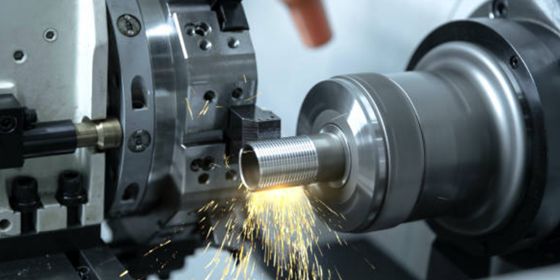
4. Free-Machining Coppers
This copper material comprises various alloying elements. The notable elements include nickel, tin, phosphorus, and zinc. The presence of these elements helps increase the machinability of this copper grade.
Furthermore, free-machining copper materials comprise copper alloys such as bronze and brass. Take note of the following:
- Bronze is an alloy of copper, tin, and phosphorus well-known for its hardness and impact strength.
- Brass is an alloy of copper and zinc with exceptional workability and corrosion resistance.
Free-machining copper materials are suitable for a wide range of copper parts machining. They include coins, torches, machined electrical components, gears, bearing, automotive hydraulic, etc.
Benefits and Drawbacks of CNC Copper Parts
Most CNC copper parts available today have specific benefits and drawbacks. Check them below:
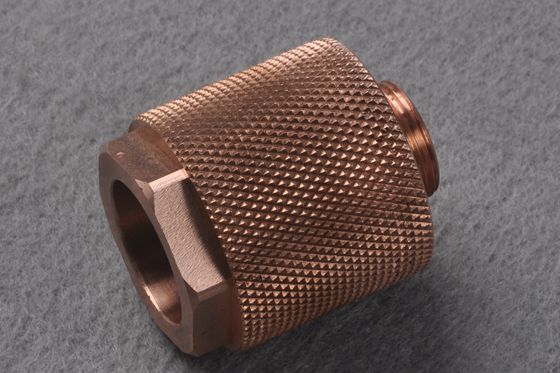
Benefits
Generally, most CNC copper parts have good machinability, ductility, and impact strength. They also show a high thermal and electrical conductivity, corrosion, and wear resistance
Another benefit of CNC machining for copper parts encompasses good formability in both hot and cold processes. Aside from this, CNC copper parts are compatible with several cost-effective surface finishes.
Drawbacks
Despite the all-around pros, some drawbacks are associated with machining copper parts with CNC. For instance, not all copper materials can undergo processes like spot welding, coated metal arc welding, etc.
Moreover, different copper grades have varying corrosion resistance properties. Thus, some CNC copper parts are susceptible to corrosion in atmospheres with reactive substances.
Factors to Consider in CNC Copper Machining
CNC copper parts continue to drive popular demand. Even so, there are some vital factors to consider before copper part machining. Take a look at some of these factors below:
1. Picking the Right Copper Material Grade
Before CNC copper machining, you must select the correct grade of copper material most suitable for your application. For instance, choosing pure copper to manufacture mechanical parts is inappropriate and expensive. As such, the excellent machinability of free-machining copper makes it most suitable.
Besides, they are also cost-effective. So, you must examine the properties required for your copper parts to select the correct copper grade for machining.
2. Design for Manufacturability
You must also address the design requirements and specifications before machining copper. This will help you achieve the functionality needed for your manufactured copper part.
A rule of thumb is that it is best to use and maintain a wall thickness of 0.5mm to manufacture aesthetic copper parts.
Furthermore, you can also engage in some design best practices. They include reducing the number of parts setups, dimension checks, and preventing deep pockets with small radii.
3. Set the Fit Feed Rate
Feed rate is the speed at which the cutting tool engages the workpiece. Hence, you must set the correct feed rate before copper part machining because it impacts the copper part’s quality, life span, and surface finishes. Moreover, copper conducts heat quickly. So, a high feed rate can increase tool wear over time.
4. Choose the Right Tool Material
Many copper grades have varying machinability and solidity. Thus, selecting the suitable tool material for copper part machining remains essential. Moreover, you’ll find that CNC steel machining applies in manufacturing high-speed cutting tools used in machining copper. This helps prevent complications like tool wear and tear and chip formation.
Surface Finishes and Post-processing Options for Copper Parts
As the name implies, surface finishes are processes after manufacturing metal parts. Generally, these post-processes aim to alter the surface of the copper parts to get specific properties and make them more appealing.
Below are the standard surface finishes applicable to copper parts.
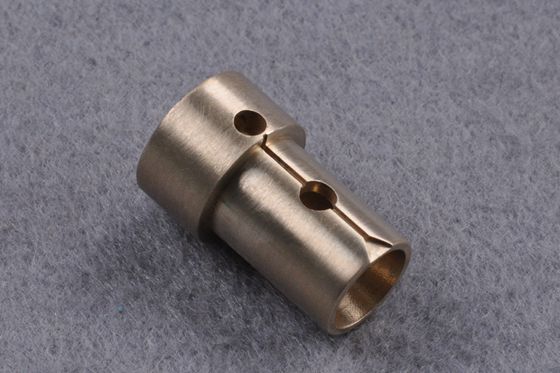
Electropolishing
During electropolishing, a microscopic layer of material gets removed from the surface of copper parts. This material typically ranges between 0.00254mm to 0.0635mm in width. As a result, this post-processing method aid in making the surface of your finished copper part smoother and glitterier.
Further, electropolishing can help improve the corrosion resistance of finished copper parts.
Electroplating
Copper electroplating helps further protect your copper parts’ outer surface from oxidation. The metal plates get implemented without disrupting their electrical and thermal conductivity. Thus, this process helps prolong the longevity of your copper parts.
Media Blasting
This post-processing method helps cover the flaws in your manufactured copper parts. Also, bead blasting creates a durable, duller, and more subtle finish.
Techniques for Copper Parts Machining
Several metal machining services are employed in many industries for producing metal parts, but some machining techniques are only suitable for certain metal materials. You’ll agree that pure copper machining can be more challenging than brass machining.
As a copper alloy, brass contains other alloying elements such as zinc, making it much easier to machine than most metallic materials. As such, you can machine copper alloys using various techniques.
Check out some of the suitable techniques for copper parts machining below:
Milling for Copper Parts
CNC milling is an automated machining process that controls rotary cutting tools’ movement and feed rate. Thus, in CNC milling copper, the tools rotate and move across the surface of the copper materials. Then, the excess copper materials are slowly removed until the needed shape and size gets formed.
CNC milling is most common with copper alloys as they have better machinability and produce precise and intricate parts. Manufacturers often use the 2-flute carbide end mill for copper milling.
Furthermore, experts use this process to fabricate diverse design characteristics for copper parts. They include notches, pockets, holes, slots, grooves, flat surfaces, contours, etc.
Turning for Copper Parts
This manufacturing process requires affixing the copper materials in a position. More so, the cutting tools fed to the workpiece remain stationary. Hence, the turning copper material at the proper set speed reduces in size to the desired dimension.
Turning is adaptable for many copper alloys and permits the rapid manufacturing of high-precision copper parts. Besides, this process is also cost-effective. Thus, CNC turning copper is suitable for making many electronic and mechanical components such as electrical wire connectors, valves, bus bars, radiators, etc.
Applications of CNC Copper Machining
Copper CNC parts are valuable in several industries, including electrical, construction, transport, and consumer goods companies.
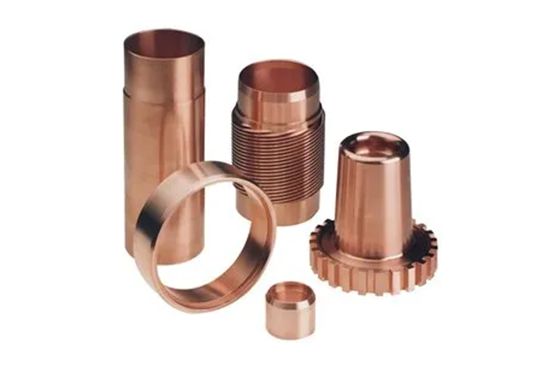
Below are the applications of copper CNC machining:
- Heat exchangers
- Electrical connectors
- Radiators
- Bearings and gears
- Gas welding nozzles etc
Copper Machining Services at WayKen
CNC coppers parts are suitable for many different applications today. Yet, quality copper machining services are pivotal to meeting the design specification and requirements for these copper parts.
At WayKen, we have experienced professionals that can handle all your copper CNC machining services. We boast top-notch CNC milling and turning copper techniques to meet your specific product design.
Contact us today for one-on-one support service, and you will get a response within 12 hours.
FAQs
What is the cutting speed for copper?
You can apply different cutting speeds for copper materials. But note that this depends on the copper grade and the machining method. For instance, a standard cutting speed of 2000 to 4000 fpm gets applied when milling brass
Is copper easy to mill?
The ease of copper milling varies based on the grade of copper material you are working on. You’ll find that pure copper is a complicated metal to machine due to its high plasticity and toughness. In contrast, copper alloys like brass are much easier to mill due to their improved machinability.
Which alloying element in copper is suitable for high-speed machining?
Alloying copper with elements such as zinc, tin, nickel, aluminum, and silicon improves the machinability of copper. Hence, this makes it suitable for high-speed machining.

